| |
|
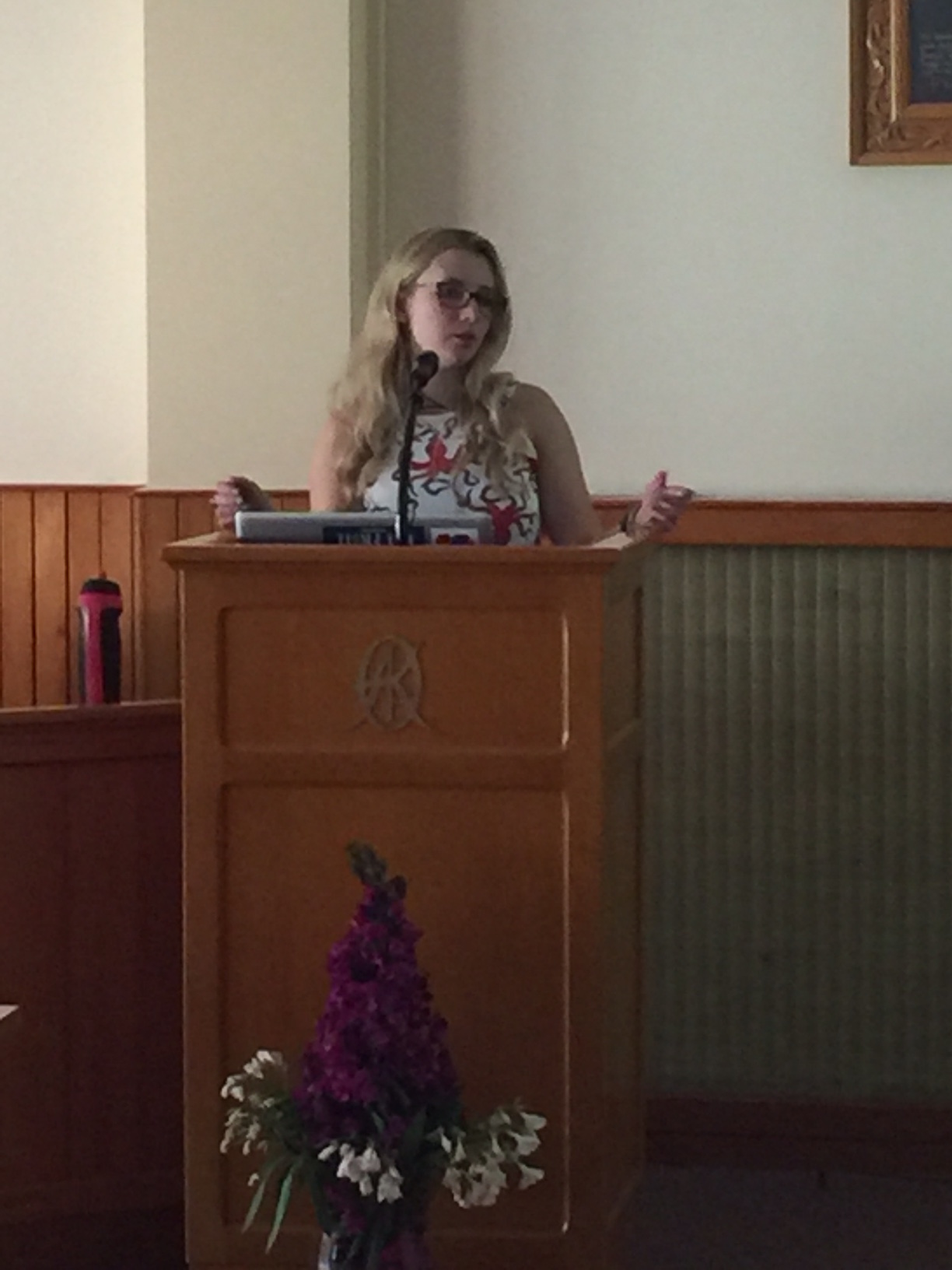
Olivia Lanier
|
Simulation of magnetic particle capture for extracorporeal magnetic separation of inflammatory cytokines for cardiopulmonary bypass (CPB) procedures
Cardiopulmonary bypass (CPB) is a procedure in which the patient’s blood is passed through an extracorporeal loop. While imperative in current cardiac surgeries, the procedure induces a systemic inflammatory response (SIR), which can lead to various complications ranging from mild organ dysfunction and fever, to multi-system organ failure. Pro-inflammatory cytokines have been shown to stimulate the SIR, and thus, their removal will reduce the SIR. Current methods for reduction of pro-inflammatory cytokines, such as glucocorticoids, are associated with undesired side effects. Therefore, an effective and safe method of removal of the cytokines is needed. This work focuses on the design of a system capable of removing pro-inflammatory cytokines from the blood by tagging them with functionalized magnetic particles in a mixing chamber while the blood is on bypass. Then, magnetically tagged cytokines are extracted as the blood flows through a high-gradient magnetic separation. Specifically, this modeling work focuses on determining dimensions of the separation chamber, magnetic particle properties, and magnetic array properties required for maximum capture of the tagged pro-inflammatory cytokines while maintaining the clinically used flow rate for extracorporeal loops of 1 to 5 L/min. These flow rates are 100 to 10,000 times higher than previous studies which aimed to capture magnetic particles from flowing blood in extracorporeal loops, and thus a model to optimize capture conditions was warranted.
Of the magnetic arrays simulated, NdFeB magnets with a checkerboard magnetization vector pattern were found to have the highest gradient force. Polymeric particles with various superparamagnetic particle loading efficiencies and different hydrodynamic diameters were simulated, and it was found that larger particles with higher superparamagnetic particle loading have a lower drag/magnetic force ratio, which indicates increased capture efficiency. Optimal dimensions have been identified. Results of the simulation will be verified with preliminary experimental studies in the future. I will briefly discuss the experimental work which has been done by my labmates thus far, including magnetic particle capture studies in water under physiologically relevant flow rates.
|
| |
|
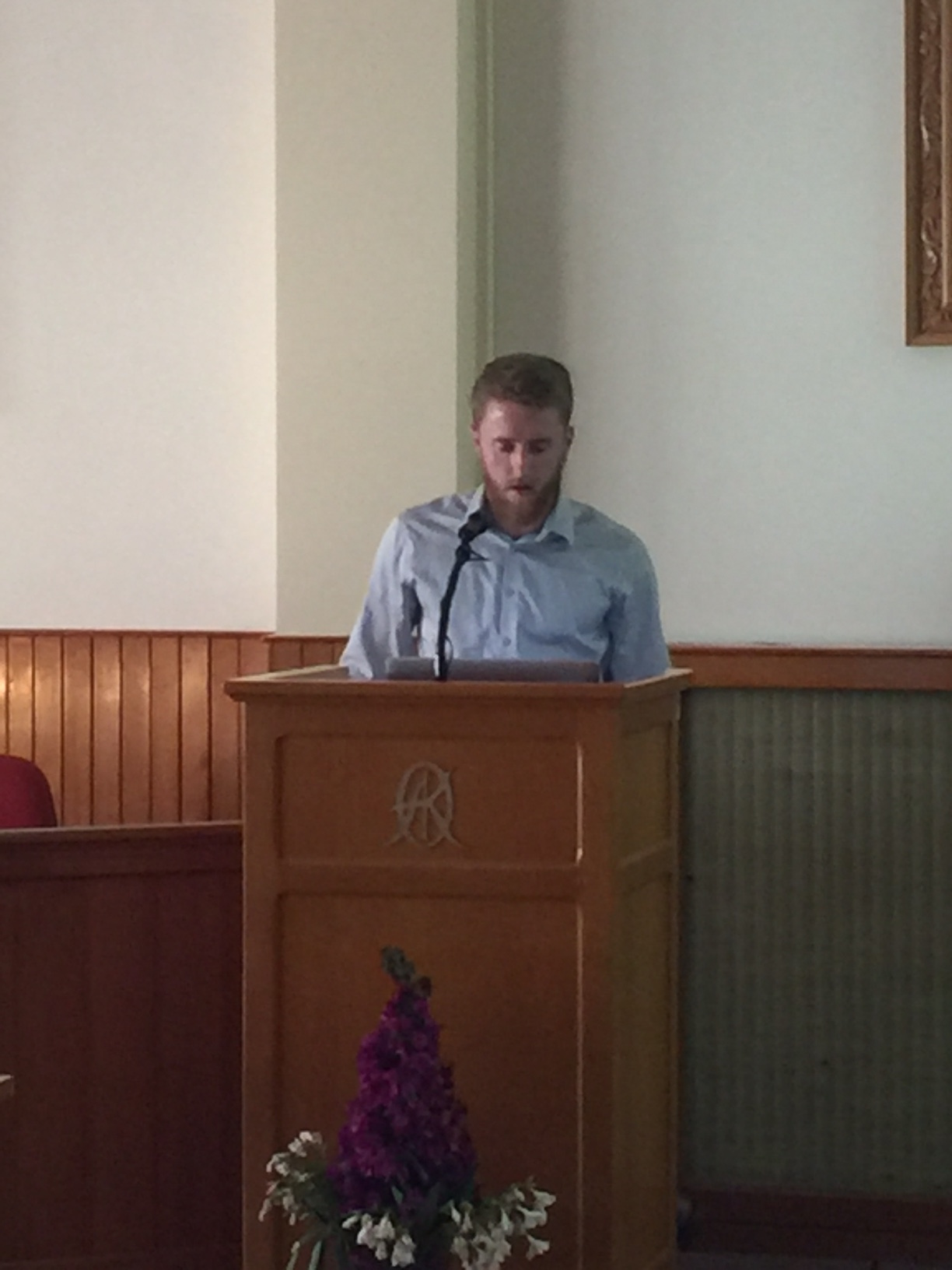
Jason Jones
|
In vivo Microscopy of the Heart
In vivo microscopy studies in the heart have been limited due to the highly light-scattering nature of the tissue and in-frame motion artifacts from contractile motion Perfused, ex vivo, heart preparations are insufficient models to study infarction since they lack true physiological workload, alterations in oxygen, blood flow, and cellular metabolism. Current optical mapping models used to study action potential propagation rely mainly on surface signals and neglect contributions from subepicardial calcium activity. Using a combination of novel surgical stabilization techniques, higher order nonlinear excitation, and high frame rate acquisition we demonstrate in vivo calcium transient quantification in mouse heart.
We demonstrated measurement of calcium transients in cardiomyocytes throughout the cardiac cycle. In vivo compaison of imaging depth of two-photon versus three-photon excitation of Texas-Red dextran in mouse heart shows that depth can be approximately doubled when using the 1700 nm source when compared to 880 nm using the maximum laser power available. The imaging system allows for high-speed scanning at 30 frames per second, allowing a large area of fluorescence intensity measurements to be taken while minimizing out of plane displacement due to the contraction of the tissue. This capability minimizes the need to employ reconstruction algorithms that require multiple beats to collect whole frame data in phase with the heart. Future studies can apply this system to the study of cellular dynamics surrounding ischemia.
|
| |
|
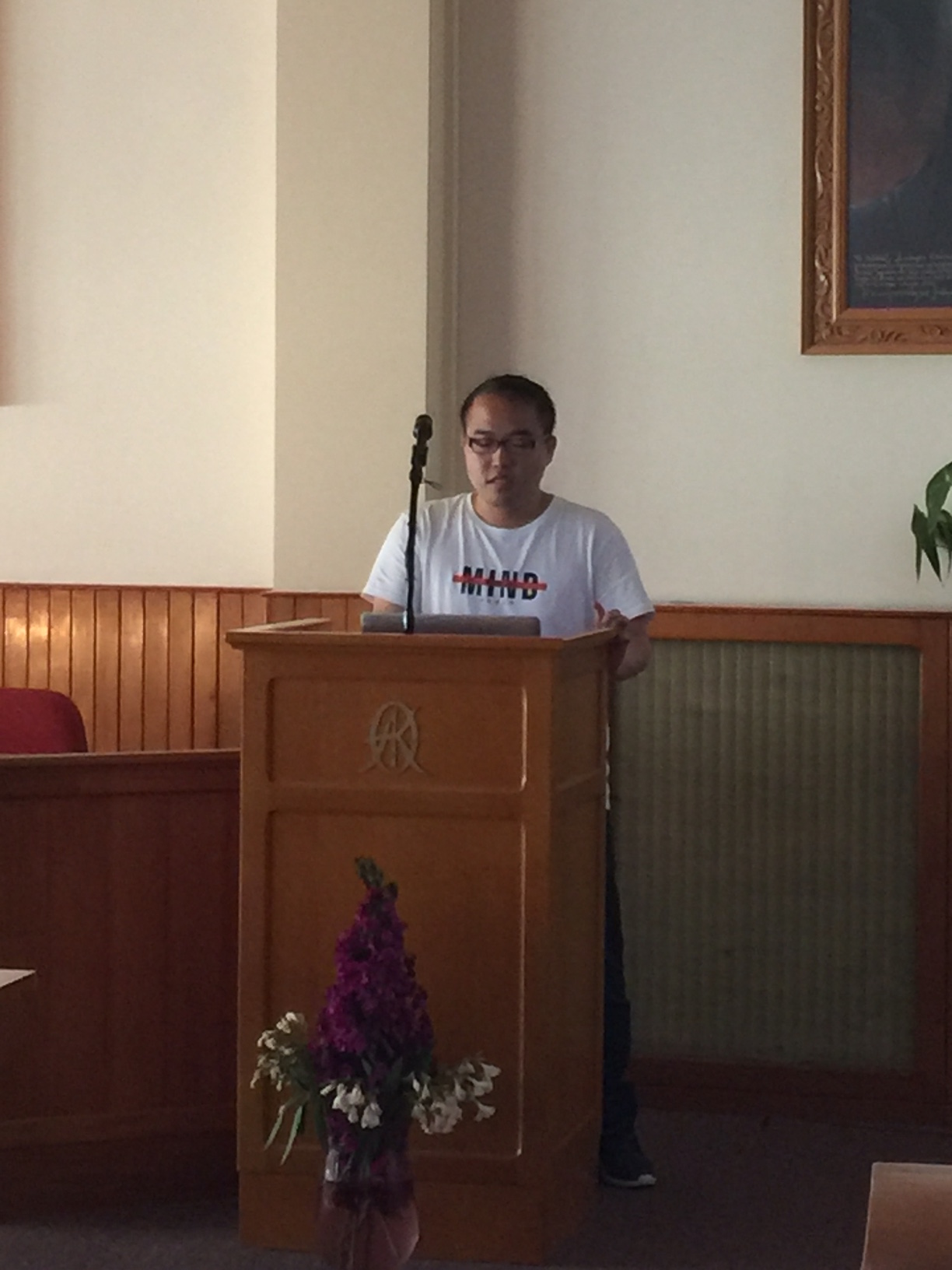
Yuan Gao
|
Bioluminescence Tomography Based on Gaussian Weighted Laplace Prior Regularization for in vivo Morphological Imaging of Glioma
Bioluminescence tomography (BLT) is a powerful non-invasive molecular imaging tool for in vivo studies of glioma in mice. It is a tomography imaging technology which restored the Bioluminescence imaging (BLI) of mice surface to intensity of Bioluminescence source in mice. Because Bioluminescence imaging (BLI) converts unique substrates into light in the presence of oxygen and other factors (such as ATP, Mg), BLT is ideally supposed to reconstruct the three-dimensional tumor region specifically consisted of viable tumor cells. However, because of the light scattering and resulted ill-posed problems, it is challenging to develop a sufficient reconstruction method, which can accurately locate the tumor and define the tumor morphology in three-dimension. Therefore, huge efforts have been devoted to developing bioluminescence tomography (BLT). One of the major assumptions for BLT reconstruction is that the light source is sparse (L1), and the other restricts the reconstructed results with different regularization matrices by Tikhonov regularization (L2). Although, these algorithms can locate the tumor position accurately, they have not achieved accurate reconstruction of the tumor morphology, which was considered to be one of the biggest challenges in BLT. There are studies of fluorescence molecular tomography (FMT) report that the glioma morphology can be adequately preserved. One FMT strategy involves the segmentation of the tumor region and other organs from the structural imaging modalities (guided method), and the other normally use Tikhonov regularization with and identity matrix for reconstruction (unguided method). However, guided method relied on the tumor segmentation from MRI or CT, and unguided method is inaccurate in neither spatial location nor morphological information. To obtain the glioma location and morphological information without using tumor segmentation as the prior, we proposed a Gaussian weighted Laplace prior (GLWP) regularization method that offers superior morphological reconstruction of glioma in BLT.
GWLP assumes that the variance of bioluminescence source energy between any two voxels inside an organ decreases with the increasing of their spatial distance rather than being constant. Furthermore, to overcome the unstable problem when the spatial distance is too small, the spatial distance was transferred into Gaussian distance to build the Gaussian Laplace regularization method.
Compared with Tikhonov regularization (identity matrix), conventional Laplace regularization (soft prior) and Distance weighted Laplace prior (the method construct the Laplace regularization matrix by spatial distance directly), GWLP provided better reconstruction performance in both tumor localization and morphology preservation in simulation. In in vivo experiment of glioma mouse model, GWLP reconstructed more accurate tumor morphological information. Furthermore, when MRI was insufficient to identify the tumor-to-normal-tissue contrastof glioma, BLT provided a high tumor-specific optical contrast and complemented the interpretation of glioma region from the multimodality non-invasive measurements.
|
| |
|
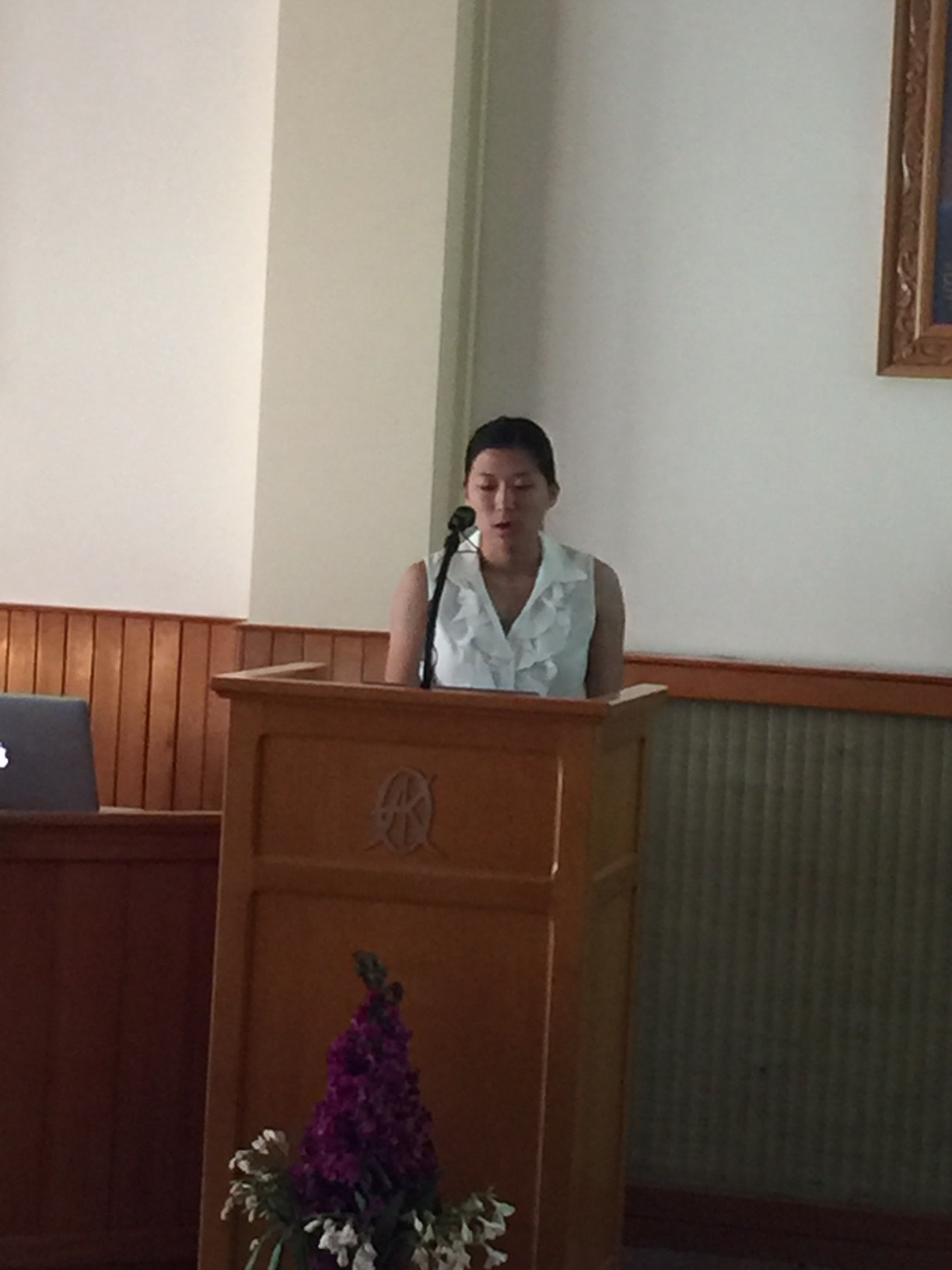
Megan Goh
|
Optical Coherence Elastography Reveals the Spatial Stiffness of Porcine Heart Valves
Cardiac valves perform a critical task by maintaining unidirectional flow in the heart, and their biomechanical properties are critical for healthy function. Moreover, one of the major areas of bioengineering is development of heart valves with biomechanical properties that match native heart valves. Thus, assessing the biomechanical properties of heart valves can provide critical information for detecting the onset of disease and is crucial for development of effective heart valve replacements. In this work, we utilize noncontact elastic wave imaging optical coherence elastography (EWI-OCE) to quantify the spatial stiffness of pig mitral valves. By analyzing the dispersion curve of the elastic wave propagation, the viscoelasticity was quantified using the group velocity of wave propagations at different positions along the mitral valve and surface wave equation. The results show that the stiffness and shear viscosity of the collagen-rich annular region of the mitral valve was greater than in the leaflet region. The results corroborated well with mechanical extensiometry, showing that EWI-OCE is an effective method of assessing cardiac valve mechanical properties.
|
| |
|
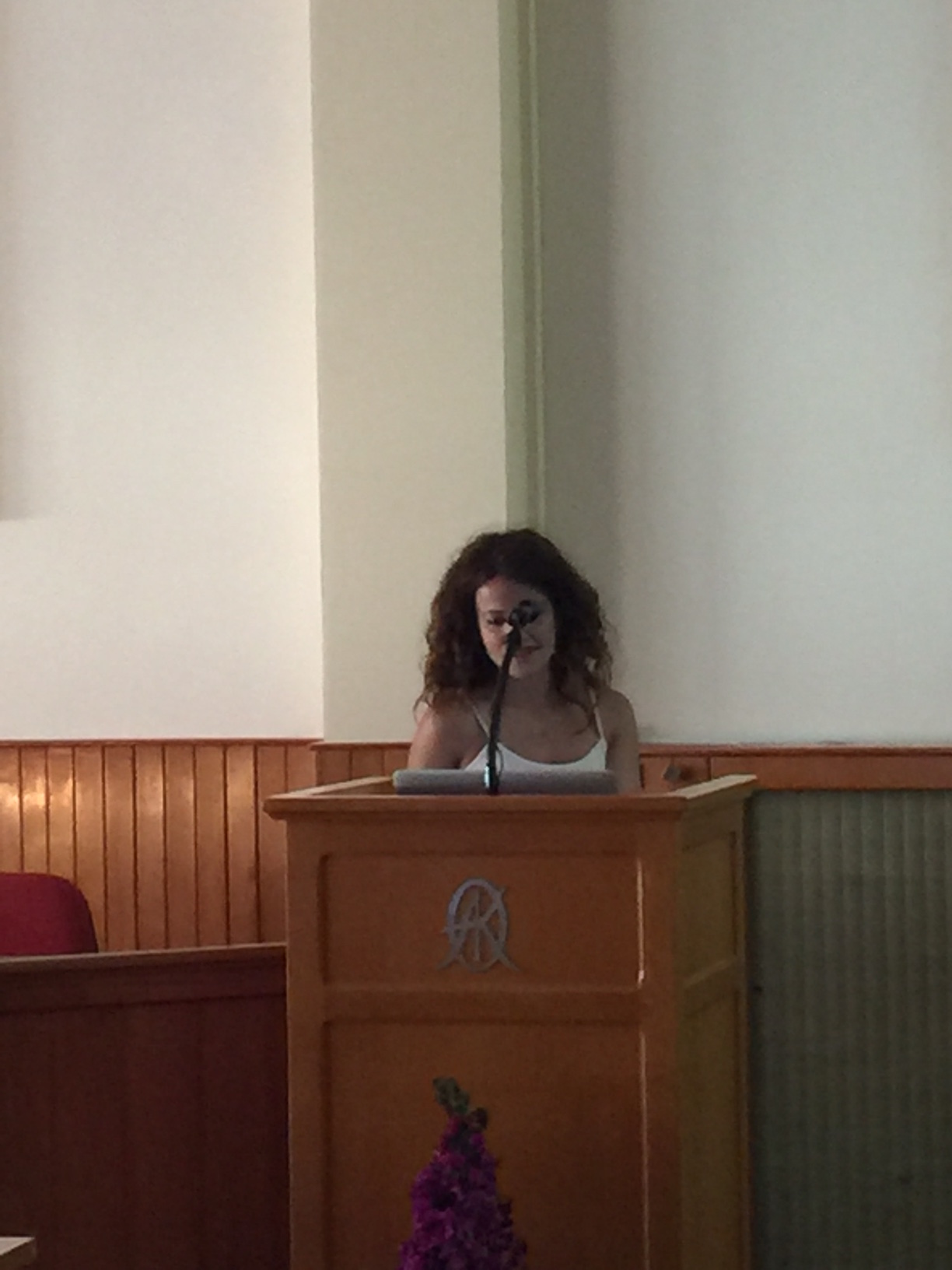
Panagiota Tsompou
|
Imaging Data of Progression and Plaque Growth Modeling
Coronary Computed Angiography Tomography (CCTA) has gained substantial ground in everyday clinical practice due to its non-invasive nature. The purpose of this study was to improve the non-invasive assessment of coronary stenosis in comparison with invasive techniques.
We sought to assess the ability of coronary CCTA to quantify coronary and plaque measurements commonly performed with other developed 3D reconstruction methods deriving either from invasive techniques.
We searched two databases that directly compared coronary CCTA and the fusion of VH-IVUS-Angiography images or from plane Invasive Coronary Angiography (ICA) images fro vessel luminal area, the lumen diameter reduction (%) and the minimum lumen diameter (MM), percentage of area stenosis, plaque area, and plaque volume using the same arterial segment for each case.
Twenty-four patients were studied in order to examine and ivestigate the efficacy of a non-invasive method of coronary stenosis severity assessment compared to two validated invasive technique. The results were very promising, since the relative error in both examined cases was less than 5%. In Spite of the modest dataset that we used, the preliminary results indicate the accuracy of the examined method and may potentially replace the traditional invasive coronary imaging techniques. We are expanding our current dataset in order to further validate and establish the proposed method.
|
| |
|
| |
|
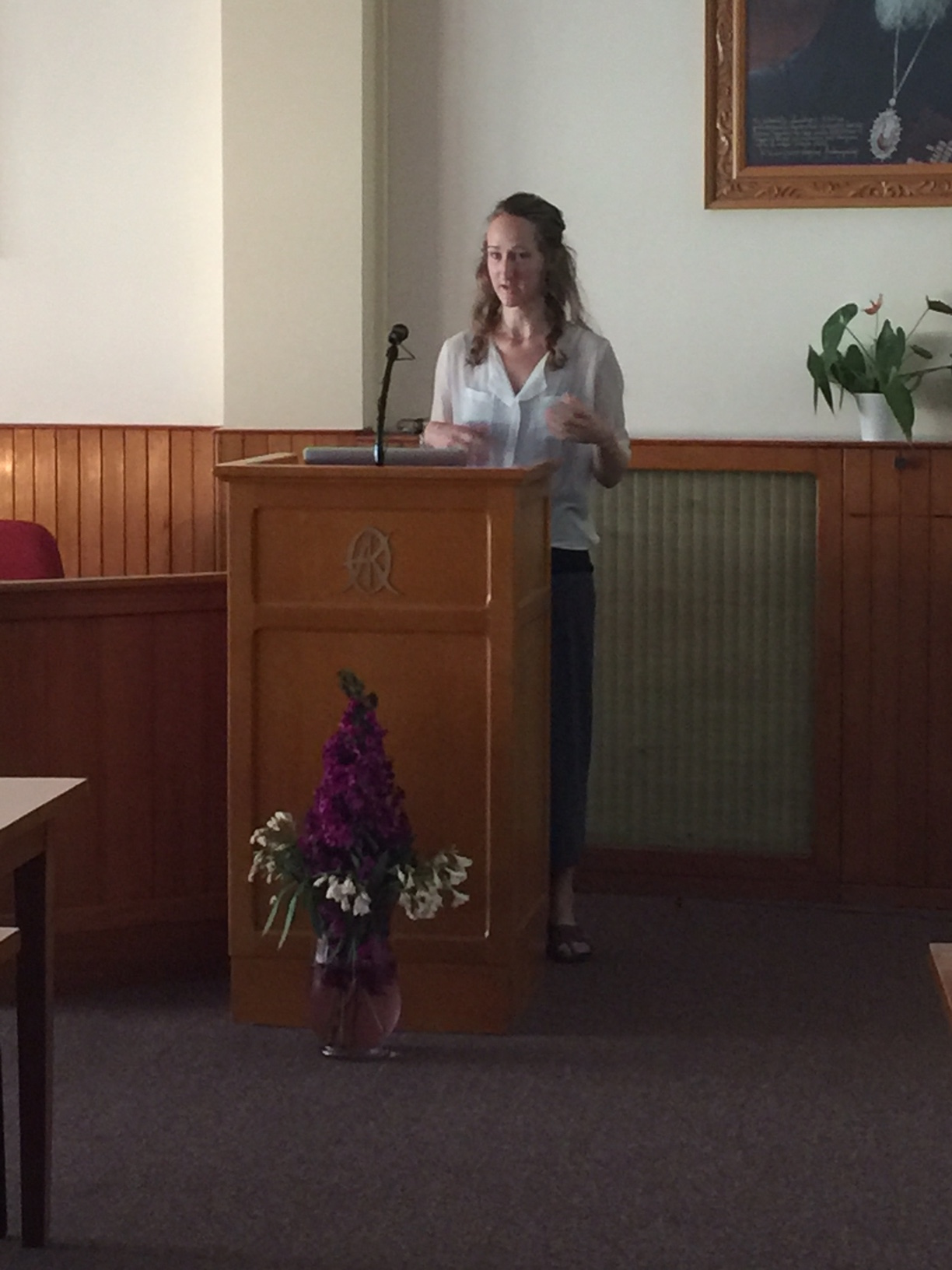
Lindsay Vinarcsik
|
Reducing stalls in brain capillaries leads to improved cognitive function in a mouse model of Alzheimer's Disease, research facilitated by machine learning and citizen science
Alzheimer's disease (AD) is the most common form of dimentia, accounting for ~60-80% of all cases. The disease is classified by progressive memory failure and an eventual profound loss of memory. It has been known for many years that AD is accompanied by a reduction of cerebral blood flow in humans, and the same can be seen in mouse models. Although this ~30% reduction likely contributes to cognitive impairment and disease progression, no physiological explanation for this phenomenon has emerged. We tested the hypothesis that the flow deficit is due to microvascular dysfunction. Using in vivo two-photon excited fluorescence imaging, we found that ~2% more capillaries had stalled blood flow in a mouse model of AD (APP/PS1) in comparison to age-matched littermate controls. In order to visualize the cortex, mice received craniotomies three weeks prior to all imaging sessions to reduce the amound of post-surgical inflammation. Mice were imaged for blood flow baseline data and imaging stacks for stall analysis. (Surgeries and imaging to be explained by Madisen Swallow). Stall analysis is facilitated by a citizen science initiative that utilizes game theory and machine learning.
Although the difference in the percentage of stalls seems small, using computational modeling it is shown that blood flow is affected downstream from the stalls, decreasing overall flow by ~30%. The majority of the capillary stalls were caused by neutrophils firmly adhered to the endothelium of brain capillaries. Administration of antibodies that bind to neurtophils (inhibiting their ability to subsequently adhere to the endothelium) led to a ~60% reduction in the number of stalled capillaries within minutes, while isotype control antibodies did not impact stalls. Blood flow in penetrating arterioles increased by a median of ~30% after anti-Ly-6G treatment, while isotype antibodies led to no change in flow speed. A series of behavioral assays were performed to assess cognitive function after Ly-6G treatment in AD mice. Ly-6G andibody was chronically injected for 4 weeks to permanently increase brain blood flow in AD mice. After this treatment, Novel Object Replacement and Y-Maze tests were performed to assess spatial memory, and the forced swim test was performed to measure depression-like behavior in the chronically injected mice. It was shown that the treatment groups have improved cognitive function and display reduced depression-like behavior compared to isotype and wildtype controls. Chronic treatment of AD mice with Ly-6G antibody significantly improves impaired cognitive function in AD mice compared to controls, thus strengthening the hypothesis that stalled blood flow is correlated to cognitive decline in mouse models of AD. Current directions include drug targeting with existing FDA approved inhibitors as well as an attempt at a better understanding of the mechanism behind neutrophil-endothelial interactions.
|
| |
|
| |
|
| |
|
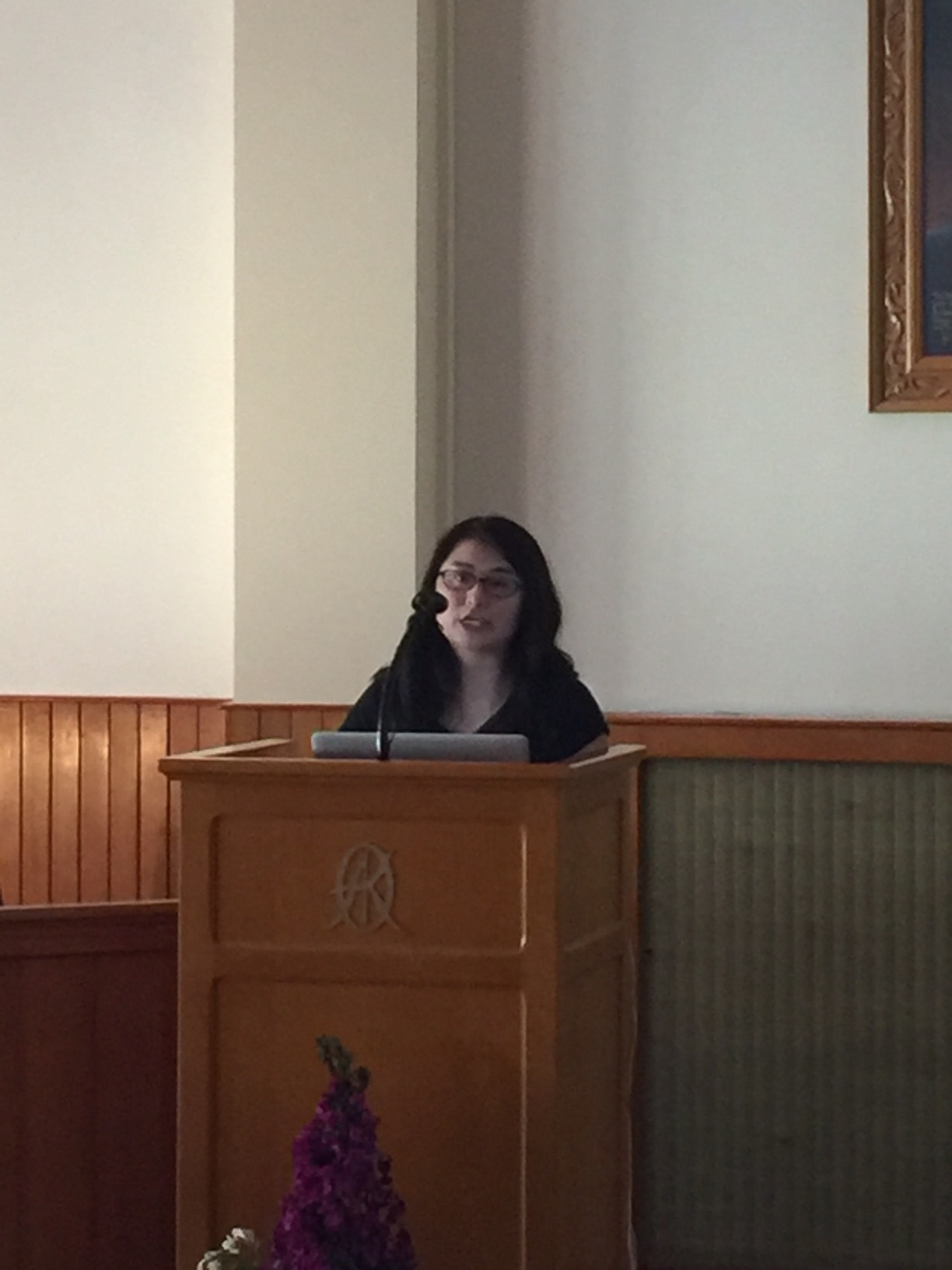
Jenny Lou
|
Nanoparticle Mediated Enhancement of Immunotherapy for Non6Small Cell Lung Cancer
Non-small cell lung cancer (NSCLC) treatment has hit a therapeutic plateau, as its 5-year survival has only increased to 22.8% from 16.4% in 1975. One promising new treatment is adoptive cell therapy (ACT), which involves ex vivo expansion and injection of human derived immune cells into patients. While ACT can achieve long lasting remission in NSCLC patients, its therapeutic potential has yet to be realized for reasons including: 1) poorly characterized longitudinal immune cell migration upon infusion in vivo, which hampers optimization of therapeutic parameters, and 2) the immunosuppressive tumour microenvironment reduces effector cell proliferation and cytotoxicity. We aim to address these problems through the combined use of double negative T-cells (DNTs), a rare population of mature, peripheral T-cells, with porphysomes, which are multimodal liposomes made up of porphyrin lipids. Specifically, we aim to enhance the efficacy of ACT in an orthotopic non-small cell lung cancer xenograft model using DNTs conjugated to porphysomes that are: 1) chelated to Mn-52, which will enable longitudinal monitoring of DNT migration via positron emission tomography and 2) loaded with an immunostimulant, which will be slowly released and continually stimulate DNTs to improve their cytotoxicity against A549 lung tumor cells. Here, we examine the feasibility of antibody loading into porphysomes via electroporation. During electroporation, electrical pulses are delivered to the porphysome, disrupting the lipid membrane and allowing for the introduction of antibodies in solution into the porphysome. First, we investigated the stability of the porphysomes after electroporation at a range of voltages (0, 500, 1000, 1500, 2000 V). Dynamic light scattering revealed that sizes of porphysomes remained unchanged before and after electroporation, meanwhile transmission electron micrographs revealed that porphysomes remained intact. Second, we investigated the binding affinity of antibodies to DNTs after electroporation. Importantly, flow cytometry confirmed that antibody binding to DNTs remained intact across the range of voltages. Third, we investigated whether electroporation can load FITC conjugated 1B2 antibodies into porphysomes. Free antibodies were separated from porphysomes using a size exclusion column, and loading was assessed through fluorescence measurements of FITC conjugated 1B2 antibodies upon lysis of porphysomes. Loading of porphysomes was observed at 500, 1000, 1500, and 2000 V. Taken together, this work indicates that electroporation is a feasible method of antibody loading into porphysomes.
|
| |
|
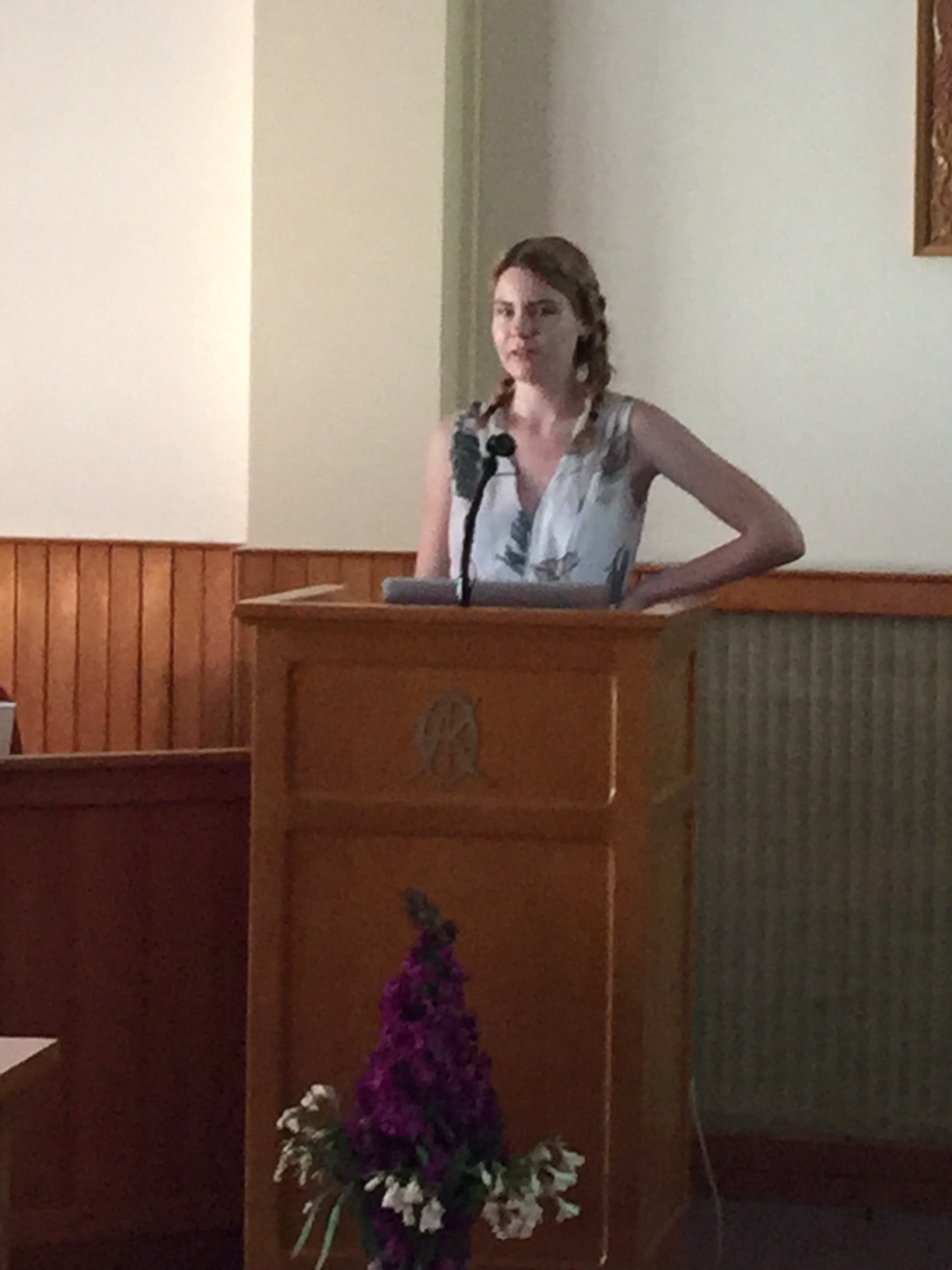
Marta Overchuk
|
Targeted Photodynamic Pre-Treatment: A Novel Strategy to Enhance Tumor Nanoparticle Accumulation
Recent nanotechnology advances have resulted in the development of several Food and Drug Administration-approved cancer nanomedicines, such as liposomal doxorubicin (CAELYXTM/Doxil®) and albumin-bound paclitaxel (Abraxane®). Although nanoparticle-encapsulated drugs exhibit significantly prolonged plasma circulation time and milder off-target toxicities, clinical studies demonstrated that nanomedicine introduction into the clinical practice did not result in major survival rate improvements. One of the possible causes of such a suboptimal therapeutic efficacy is that only a small percentage of the nanoparticle injected dose is able to reach the tumor, then leave the vascular compartment and interact directly with cancer cells. High interstitial fluid pressure, poor blood perfusion and high cell packing density collectively impede nanoparticle extravasation and interstitial diffusion, significantly decreasing their therapeutic potential. Therefore, a novel strategy that can locally alter tumor microenvironment and enhance nanomedicine delivery is in high demand. Photodynamic therapy is a versatile cancer treatment strategy, exploiting the combination of a photoreactive molecule (photosensitizer) and an external light source to generate reactive oxygen species and locally induce cell death. Recent studies demonstrate the potential of photodynamic therapy, enabled by a targeted antibody-photosensitizer conjugate, to enhance nanoparticle delivery in subcutaneous tumor mouse models. Recently we developed a small molecule targeted photodynamic agent (Molecular weight: ~2kDa), consisting of three building blocks: (1) a porphyrin photosensitizer (pyropheophorbide a), (2) a pharmacokinetic-modulating peptide and (3) a targeting ligand. In the current study, we explored the potential of the prostate-specific membrane antigen (PSMA)-targeted photosensitizer and laser pre-treatment to enhance nanoparticle delivery to the tumor. We establish dual PSMA-positive subcutaneous mouse model. Each animal was injected with the PSMA-targeted photosensitizer, and one tumor was treated with the subtherapeutic light dose, while the other tumor remained untreated. To validate the method, we systemically administered animals with differently sized organic nanoparticles (20 and 100 nm) and monitored their accumulation in the tumors via fluorescence and photoacoustic imaging. Up to date, we demonstrated through fluorescence and photoacoustic in vivo imaging, that PSMA-targeted photodynamic pre-treatment leads to faster (within 1h post injection) and more efficient accumulation of the model organic nanoparticles if compared to the laser-untreated control tumor within the same animal. We are further investigating changes in the nanoparticle intratumoral distribution with the proposed pre-treatment. State-of-the-art light delivery technologies enable access to solid tumors at various anatomical sites, while simple chemistry of the developed agent makes it an appealing candidate for clinical translation. Targeted photodynamic pre-treatment holds the potential to become a relatively simple tool to enhance cancer nanochemotherapy in the clinic.
|
| |
|
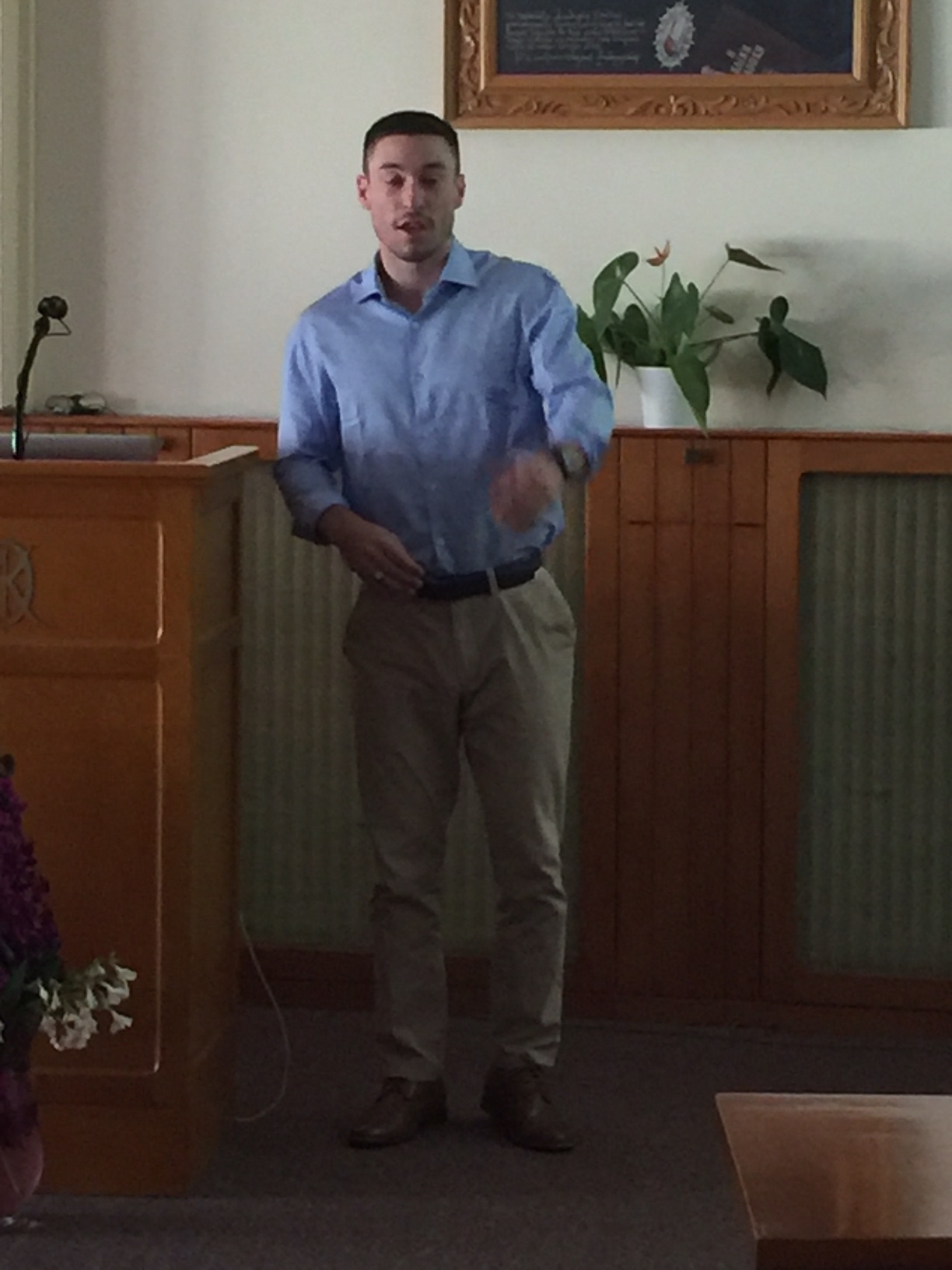
John Aggas
|
Polymer Morphology Influences Electronic Properties of Polyaniline-Chitosan Nanocomposites for Use in Next Generation Bioelectronics
Biomedical bioelectronics, which are much more flexible than traditional electronics and can thus match the modulus of human tissue, support conversion of ionic to electronic conduction, and be indwelling to allow direct electronic communication with “the biology” are being studied as replacements for silicon. Specifically, polyaniline, one of the most widely studied conductive polymers, is being used for its low cost, simple synthesis, and high polaronic conductivity for application in next-generation electronics, which can benefit from 3-D nano-structured morphologies. Combining this intrinsically conductive polymer with natural, bio-derived, polymeric hydrogels such as chitosan gives rise to a new class of responsive polymers called electroconductive hydrogels (ECH). Chitosan, which has a wide variety of applications such as wastewater treatment, drug delivery, and biosensors, is itself not entirely suitable for sensing as it results in a poor response time due to its low conductivity. Developments in the use of polymer architecture have yielded essential resistive and essentially capacitive polyaniline hydrogels. These hydrogels can in turn be used to replace traditional solid state electronics with the addition of bioconjugated enzymes. This is demonstrated in a functional DC oscillator circuit, where glucose and lactate levels can be shown to correlate to changes in the output signal (frequency and amplitude). These functional organic electronics will be shown to shift the paradigm of biosensors towards the use of biocompatible circuit elements.
PAn-Cl/CHI composites was prepared by mixing varying volume percentages (0 – 100 % at 10% intervals) of PAn-Cl (2mg/mL) and chitosan (2mg/mL in 0.1 M acetic acid). The suspensions were ultrasonicated for 30 minutes before being drop cast (10 μL) on gold Interdigitated Microsensor Electrodes (IMEs). The IMEs (10 interdigits with 1.0 mm fingers) were used to interrogate the electrical properties of a PAn-Cl/CHI composites. Once the suspensions were drop-cast, the composites were prepared by air drying (24 hours) or by freezing (-80°C) and then lyophilizing (223 K, 0.02 mbar, 24 hours). Cyclic voltammetry and IV characterization of the PAn-Cl/CHI composites were carried out to study the redox properties and apparent conductivity of the films with different modes of preparation. Electrochemical Impedance Spectroscopy (EIS) was used to measure the impedance of the ECH composites over the frequency range of 10 mMz - 1 MHz. EIS measurements were done in air and when submerged in deionized water, 10 mM PBS buffer (pH 7.4), and 25 mM HEPES buffer (pH 7.2). Equivalent circuit analysis with a modified Randles (R(QR)) circuit was used to calculate the solution resistance, charge transfer resistance, and double layer capacitance of the polymer. SEM images were acquired to characterize the morphological differences in ECH samples prepared with different procedures.
EIS, cyclic voltammetry, SEM, and equivalent circuit analysis were used to demonstrate that the composition and type of preparation influences the electrical properties of PAn-Cl/CHI ECHs. Drop cast composites showed a frequency independent or purely resistive nature in air and non-ionic buffer. Lyophilization however, generated a highly porous, and continuous 3D scaffold, which greatly increased the capacitance of the composite. The enhanced specific charge capacity and 3-D electrode architecture is very promising for future applications involving biological circuits, regenerative engineering, engineered abio-bio interfaces, and energy storage devices.
|
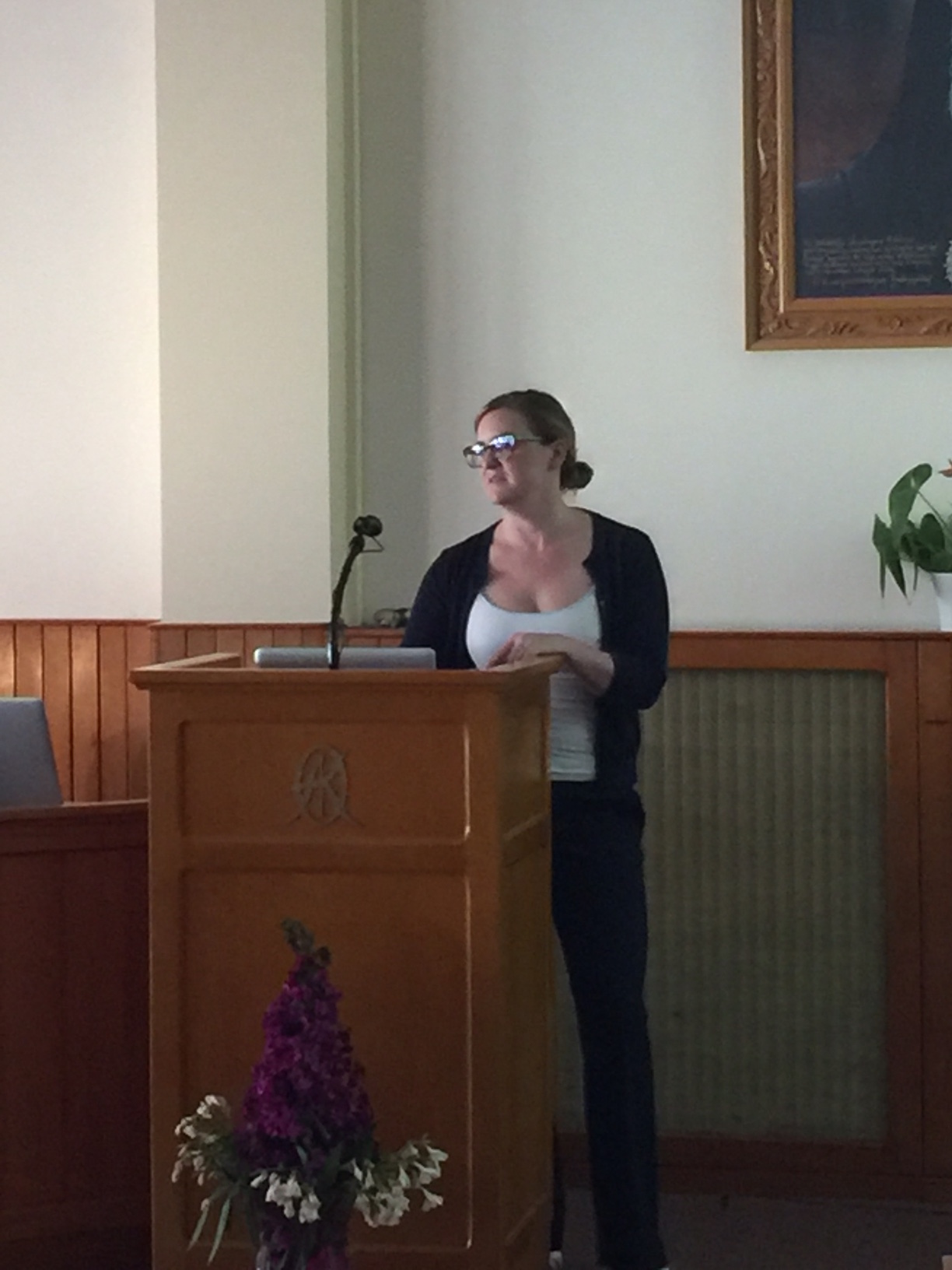
Claire Witherel
|
Immunomodulatory effects of human cryopreserved viable amniotic membrane (hCVAM) in a pro-inflammatory environment in vitro
Introduction: Chronic wounds remain a major clinical challenge. Human cryopreserved viable amniotic membrane (hCVAM) is among the most successful therapies, but the mechanisms of action remain loosely defined. As proper regulation of macrophage behavior is critical for wound healing with biomaterial therapies, we hypothesized that hCVAM would positively regulate macrophage behavior in vitro. Materials and Methods: Primary human pro-inflammatory (M1)macrophages were seeded directly onto intact hCVAM or cultured in separation via transwell inserts (Soluble Factors), in the presence of pro-inflammatory stimuli (interferon-g (IFNG) and lipopolysaccharide (LPS)) to simulate the chronic wound environment. Macrophages were characterized after 1 and 6 days using multiplex gene expression analysis of 37 macrophage phenotype- and angiogenesis-related genes via NanoString, andprotein content from conditioned media collected at days 1, 3 and 6 was analyzed via enzyme linked immunosorbent assays (ELISA). Results and Discussion: Gene expression analysis showed that Soluble Factors promoted significant upregulation of pro-inflammatory marker IL1B on day 1 and downregulation of TNF on day 6. On the other hand, intact hCVAM, which includes soluble factors, promoted downregulation of pro-inflammatory markers TNF, CCL5 and CCR7 on day 1 and endothelial receptor TIE1 on day 6, and upregulation of the anti-inflammatory marker IL10 on day 6 compared to the M1 Control. Other genes related to inflammation and angiogenesis (TNF, MMP9, VEGF, etc.) were differentially regulated in the Soluble Factors and intact hCVAMgroups at both time points, though they were not expressed at significantly different levels compared to the M1 control.Interestingly, Soluble Factors promoted increased secretion of the proinflammatory cytokine tumor necrosis factor-alpha (TNF), while direct contact inhibited secretion of TNF, relative to the M1 Control. Both Soluble Factors and intact hCVAM inhibited secretion of MMP9 and VEGF, pro-inflammatory proteins that are critical for angiogenesis and remodeling, compared to the M1 Control, with intact hCVAM having a stronger effect. Conclusions: In a simulated pro-inflammatory environment, intact hCVAM has distinct anti-inflammatory effects on primary human macrophages, and direct macrophage contact with intact hCVAM is required for these effects. These findings are particularly important for the design of next generation immunomodulatory biomaterials for wound repair and regenerative medicine that may include living cells, soluble factors or a controlled drug delivery system.
|
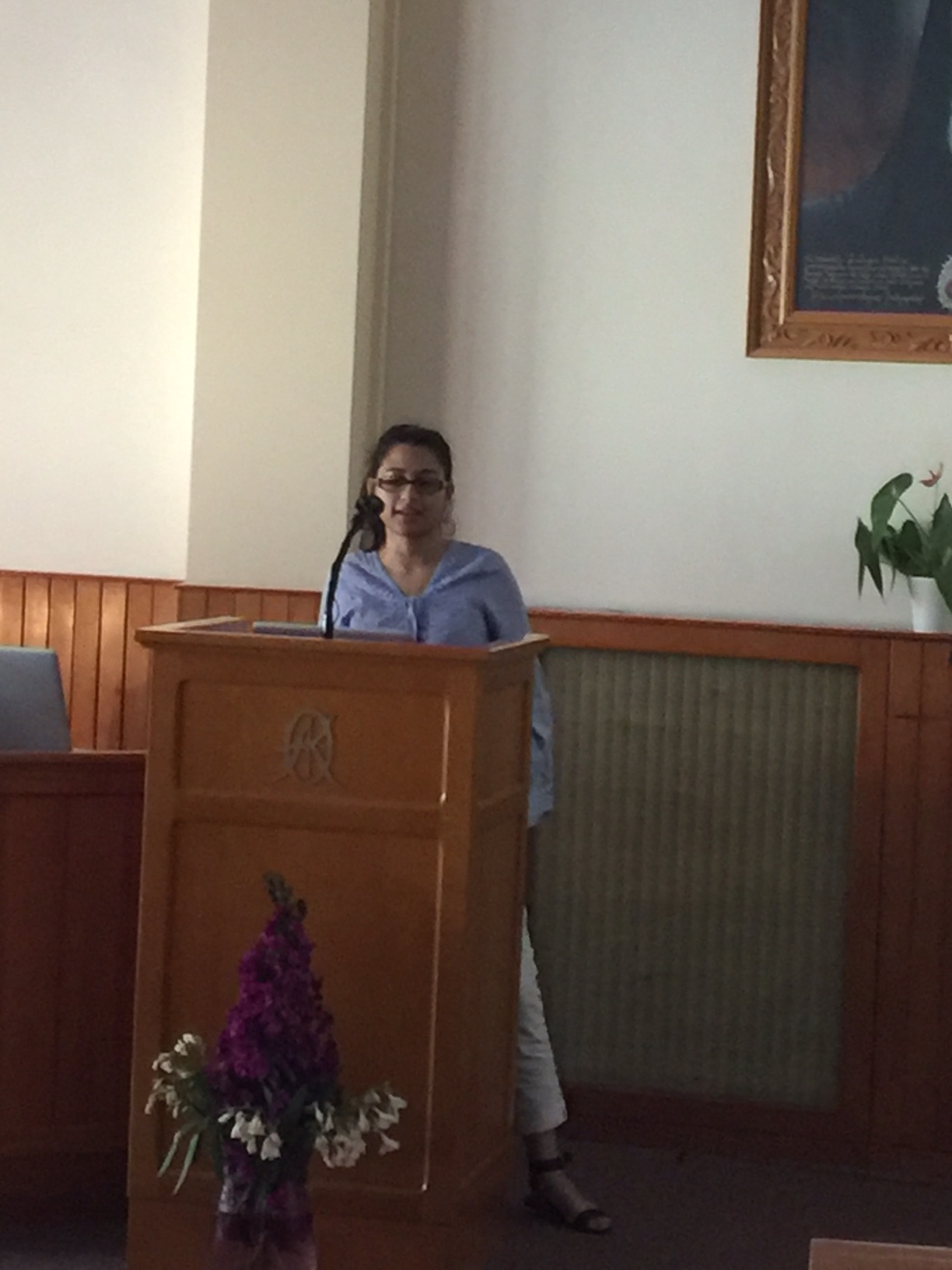
Mahum Siddiqui
|
Effects of an Attachment-based Intervention on Depression Among High-Risk Mothers
Maternal depression may interfere with sensitive and effective parenting (Lovejoy et al., 2000), which may in turn negatively affect children’s social and behavioral development. High-risk mothers in particular, such as those facing poverty-related stress, may struggle with depression. Attachment and Behavioral Catch-up (ABC) is a 10-session home-based intervention designed to enhance sensitivity for infants exposed to early adversity. In ABC, a parent coach provides frequent positive commenting on parent-infant interactions as they occur during sessions. Previous research has demonstrated that the ABC intervention leads to higher rates of secure attachment and more normative levels of cortisol. Given that maternal depression is a risk factor for problematic child outcomes, we examined whether ABC led to a reduction in maternal depression in the context of community-based implementation efforts. Participants included 73 mothers living in a low-income community. Upon consent, mothers were randomly assigned to receive ABC immediately or were placed on a 3-month waitlist (ABC = 29, waitlist = 44). At baseline and follow-up, mothers completed the Center for Epidemiologic Studies Depression Scale (CES-D; Radloff, 1977). We conducted a mixed-model ANOVA with depression symptoms as the dependent variable, time (pre/post) as a within-subjects factor, group (ABC/Waitlist) as a between-subjects factor, and family sociodemographic risk as a covariate. Controlling for sociodemographic risk, there was a significant group X time interaction, F (1,70) = 4.62, p = 0.35. Whereas the control group showed no changes in depressive symptoms across time, there was a significant decline in depression among mothers who received ABC. In sum, mothers who received the ABC intervention showed a decline in depression. In future research, it will be important to examine: (1) what specifically about ABC led to a decline in depression (e.g., positive support from a parent coach, enhanced relationship with child), and (2) whether reductions in depression predict improvements in child functioning.
|
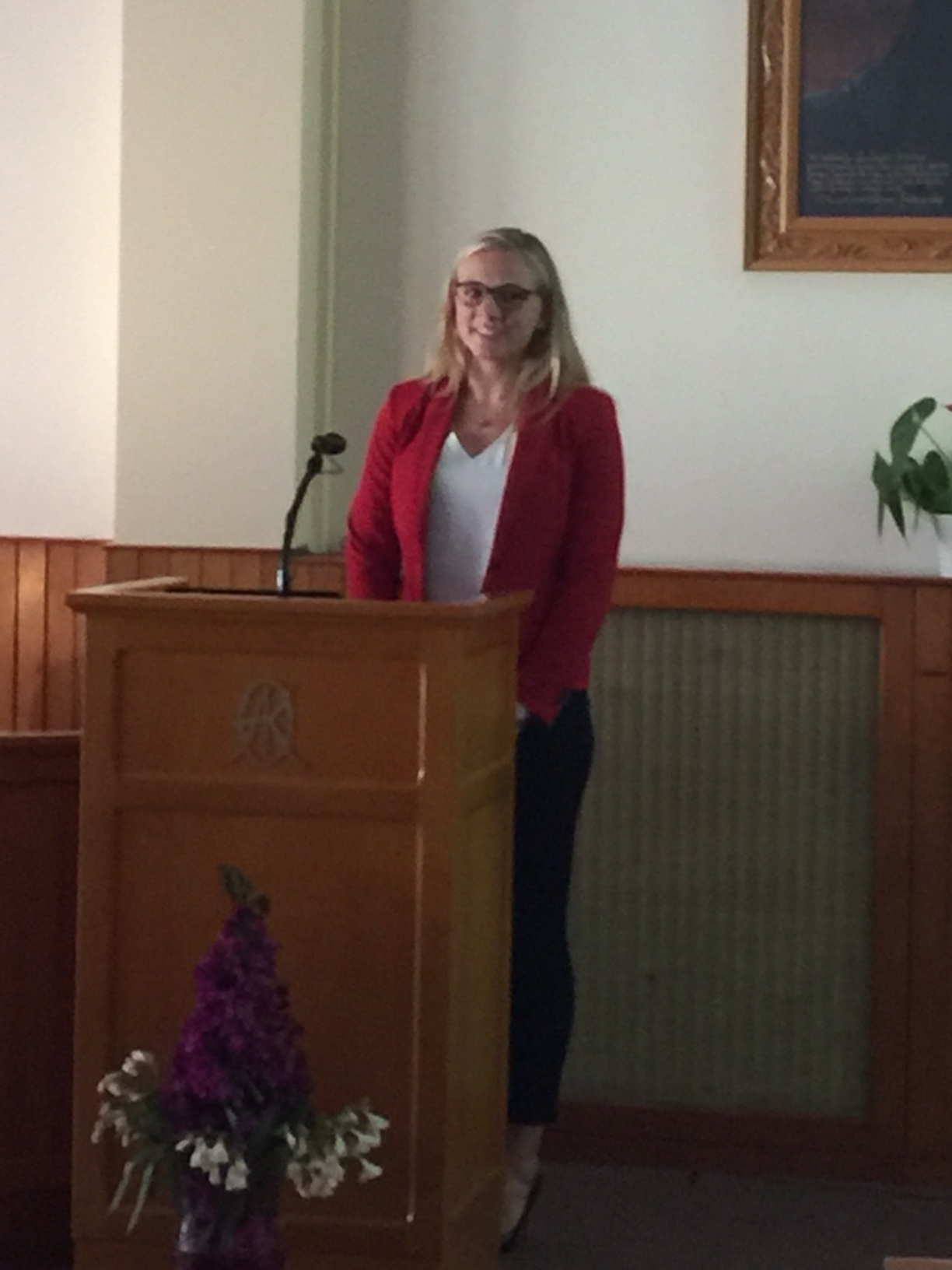
Amanda Urke
|
Functional analysis of C9orf72 mutations in ALS via targeted genome engineering
As an undergraduate at Stanford University, I have recently started research in the Qi Lab under the direction of Dr. Antonia Dominguez. Our lab is interested in novel genetic engineering technology development, in particular repurposing CRISPR tools for a variety of potentially therapeutic applications. The traditional CRISPR/Cas9 bacterial system leverages the nuclease ability of the Cas9 protein for sequence specific gene editing using a single guide RNA (sgRNA). My lab has invented a modification to this technology that allows for transcriptional regulation rather than gene editing using a catalytically inactive enzyme (dCas9). CRISPR/dCas9 can be implemented in in vitro studies to regulate transcription in a variety of ways, including repression, activation and epigenetic modification. The particular project that I am working on investigates the mechanism of a common mutation found in patients with Amyotrophic Lateral Sclerosis (ALS), a fatal motor neuron disorder with no effective treatments. This mutation is a hexanucleotide repeat expansion in the chromosome 9 open reading frame 72 gene (C9orf72). While we know that C9 influences the pathogenesis of ALS, its mechanism of action is not well characterized. Our lab is utilizing CRISPR/dCas9 to evaluate how in vitro repression or activation of C9orf72 affects motor neuron survivability. Eventually, we will model ALS disease using human induced pluripotent stem cells (hiPSCs) from patients subsequently differentiated into motor neurons. Thus far, we have successfully implemented proof of concept CRISPR repression and activation systems in hiPSCs for two other genes, CXCR4 and OCT4. Since the sgRNA sequence is customizable, we have determined which sequences produce the most effective activation or repression through studies in HEK293T cells. We have performed lentiviral transfections of these specific sgRNAs into the CRISPRi construct (containing a KRAB repressor, GFP, and dox inducible promoter) or the CRISPRa construct (containing a VP64-p65- Rta affector, GFP, and a dox inducbile promoter) in previously established hiPSC lines. Using flow cytometry we have assayed successful incorporation of the sgRNA and successful activation or repression of CXCR4 and OCT4 genes respectively (Fig. 1 & Fig. 2). We are now working on applying these activation and repression systems to the C9orf72 gene in hiPSCs, after which we will use control and patient human motor neurons to determine whether gain- or loss-of-function results in decreased motor neuron survivability in ALS.
|
| |
|












